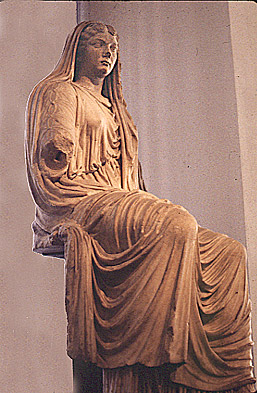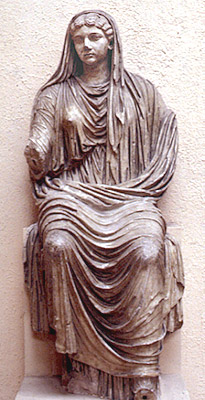

This life-size statue of Livia was originally seated on a chair or throne; it was found at Paestum in Sicily along with a seated statue of Livia's son Tiberius. Her face is slightly turned toward the right to meet the gaze of Tiberius, who is looking toward his left. The sculptural group probably dates from the reign of Tiberius. The majestic and imposing Livia is heavily draped in the traditional clothing of the Roman matron—a tunic with long sleeves that are fastened at intervals with buttons, the stola (a long, full, sleeveless overtunic fastened with straps at the shoulders that was reserved for legitimately married Roman women), and the palla (a long, rectangular cloak worn over the left shoulder, under the right, and thrown back again over the left shoulder). The heaviness of the drapery indicates that the garments are made of wool, rather than the lighter linens and silks that were more fashionable in aristocratic circles. Indeed, Augustus used to boast that the wool for his clothing and hers was woven by Livia herself in emulation of the (very) old-fashioned Republican times when all textiles were woven by women at home. In this statue Livia has pulled her palla over her head to form a veil, another symbol of marriage and respectability.
The image below, taken from a plaster cast, shows a frontal view of this statue.
